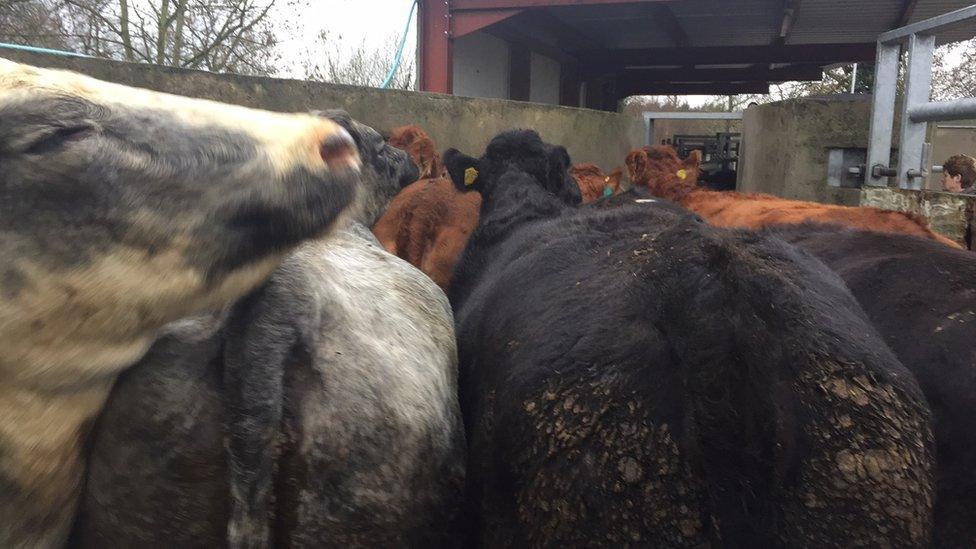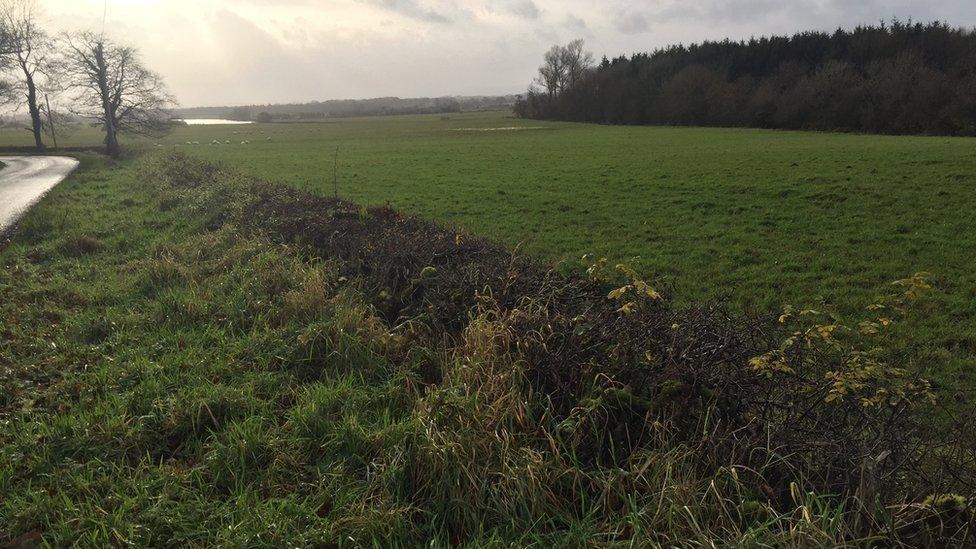Badger survey as cattle disease spikes
- Published

Cattle gathered together for a TB test
Badgers in two hotspots are to be tested as part of measures aimed at addressing a spike in a cattle disease.
It is thought the results could influence a decision on a future cull of the protected species.
Northern Ireland's chief vet Robert Huey said recent figures showed a "sharp increase" in bovine TB.
Officials have for decades been trying to eradicate the respiratory disease affecting cattle, which costs £34m a year.
The money is spent on testing and compensation payments.
An average 8.6% of herds are affected by the disease, though the figure is higher in some areas.
Mr Huey said it was important to identify ways of improving the approach to the disease "so that we can identify and remove infected animals at the earliest opportunity and take other actions needed to protect herds".
Cattle testing positive are slaughtered and the farmers compensated.
The disease can be passed between badgers and cattle.

It's expected some 40 badgers will be tested
The two areas selected for the badger survey are near Aghadowey and around Omagh.
They were chosen because both are thought to have a large number of badgers as well as a high density of herds with TB.
A small number of 1km square grids will be selected and surveyed.
Trapped badgers will have blood samples taken and tested: Any testing positive for the disease will be put down.
Some 19 badgers will be tested in each area.
Controversial policy
The Department of Agriculture, Environment and Rural Affairs said the results would be used to inform "potential future wildlife intervention policies".
This is on top of an existing five year pilot of badger testing near Banbridge in Co Down.
A recent report by a TB working group recommended a badger cull in as many as 10 NI areas here.
Such a policy has proven highly controversial in England.
Farmers in Northern Ireland have said there's little point in addressing the disease in cattle if it is not also addressed in wildlife.

Farmers have asked for wildlife intervention to accompany measures to tackle the disease in cattle
The authorities in the Republic of Ireland have credited a cull there with a significant reduction in the disease in cattle.
Among the other measures being introduced is a more severe interpretation of the skin tests used to check for the disease.
A change is also planned that will see herds with more than one animal testing positive having their "Officially Tuberculosis Free (OTF)" status removed.
This will be introduced early next year to provide greater assurances that herds are really free of the disease when movement restrictions are lifted.
The department said a rise in the incidence of TB could be due to an increase in infection or an improvement in identifying the disease.
It said it was likely to be due "to a combination of both factors".